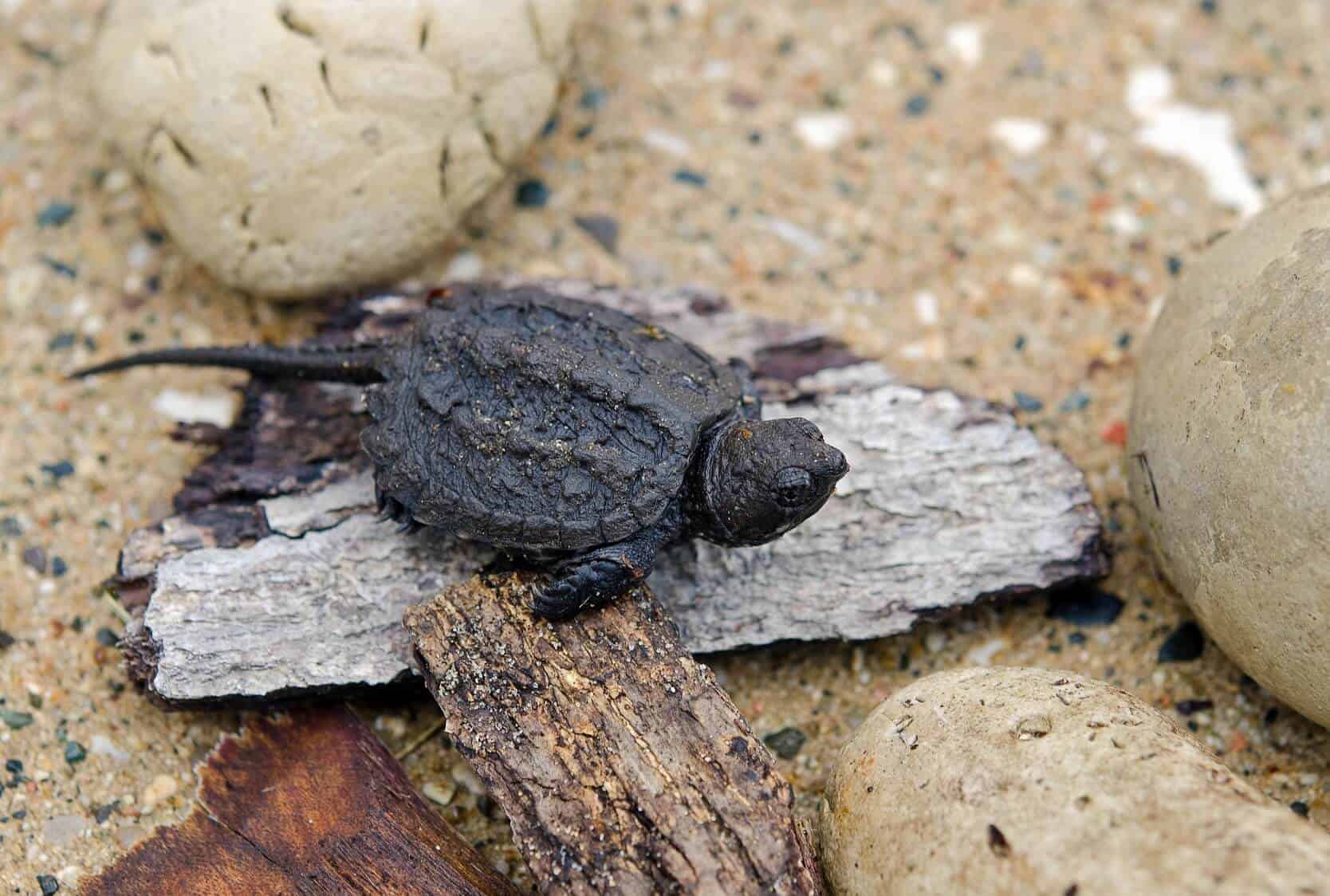
Baby Snapping Turtle Care: A Comprehensive Guide
Introduction
Baby snapping turtles are captivating creatures that require specialized care to thrive. These semi-aquatic reptiles possess unique characteristics and specific needs that must be met to ensure their well-being. This comprehensive guide will provide detailed instructions on how to provide optimal care for baby snapping turtles, covering aspects such as habitat setup, nutrition, health maintenance, and common challenges.
Habitat Setup
Enclosure:
- Size: A 10-gallon tank is suitable for a single baby snapping turtle. As they grow, upgrade to a larger enclosure, such as a 20-gallon tank or a custom-built aquarium.
- Substrate: Use a combination of sand and gravel to create a natural bottom. Avoid using small pebbles or stones that can be ingested.
- Water: Provide a shallow water area that allows the turtle to submerge its head and body. The water depth should be gradually increased as the turtle grows.
- Basking Area: Create a dry area with a basking platform that extends above the water level. This area should be equipped with a heat lamp to provide a warm spot for the turtle to bask.
Lighting:
- UVB Lighting: Provide UVB lighting for 12-14 hours per day to promote calcium absorption and prevent metabolic bone disease.
- Heat Lamp: Use a heat lamp to maintain a basking area temperature of 85-90°F (29-32°C).
Filtration:
- Water Filter: Install a water filter to remove waste and keep the water clean.
- Water Changes: Perform partial water changes (25-50%) weekly to maintain water quality.
Nutrition
Diet:
- Live Food: Baby snapping turtles are carnivorous and should be fed live food, such as crickets, mealworms, earthworms, and small fish.
- Commercial Pellets: Supplement the live food diet with commercial turtle pellets designed for carnivorous species.
- Feeding Frequency: Feed baby snapping turtles daily. As they grow, gradually reduce the feeding frequency to every other day or three times a week.
Supplements:
- Calcium: Provide a calcium supplement to prevent metabolic bone disease. Dust live food or sprinkle calcium powder on pellets.
- Vitamin D3: Vitamin D3 is essential for calcium absorption. Provide a vitamin D3 supplement as directed by your veterinarian.
Health Maintenance
Veterinary Care:
- Regular Checkups: Schedule regular veterinary checkups to monitor the turtle’s health and detect any potential issues early on.
- Parasite Control: Test for parasites and treat as necessary to prevent health problems.
Hygiene:
- Clean Enclosure: Regularly clean the enclosure to remove waste and prevent bacterial growth.
- Water Quality: Maintain good water quality by performing partial water changes and using a water filter.
Common Challenges
Metabolic Bone Disease:
- Symptoms: Soft or deformed shell, lethargy, muscle weakness
- Causes: Calcium deficiency, lack of UVB lighting
- Treatment: Provide calcium supplements, UVB lighting, and veterinary care
Respiratory Infections:
- Symptoms: Wheezing, coughing, nasal discharge
- Causes: Bacterial or viral infections
- Treatment: Antibiotics or antiviral medications prescribed by a veterinarian
Shell Rot:
- Symptoms: Soft or discolored areas on the shell
- Causes: Bacterial or fungal infections
- Treatment: Antibiotics or antifungal medications, veterinary care
Conclusion
Baby snapping turtles are fascinating creatures that require specialized care to thrive. By providing an appropriate habitat, meeting their nutritional needs, maintaining their health, and addressing common challenges, you can ensure the well-being of these captivating reptiles. Remember to consult with a qualified veterinarian for guidance and support throughout the turtle’s life. With proper care, baby snapping turtles can live long and healthy lives, bringing joy and wonder to their owners.
